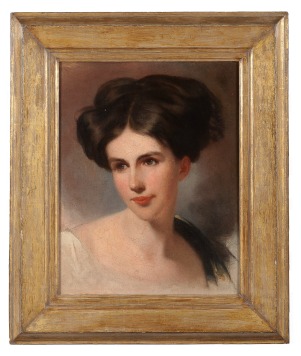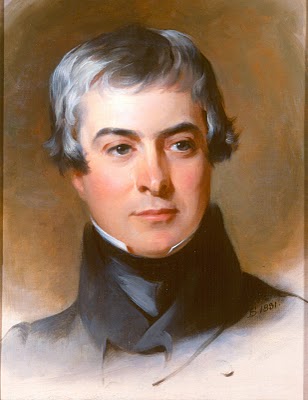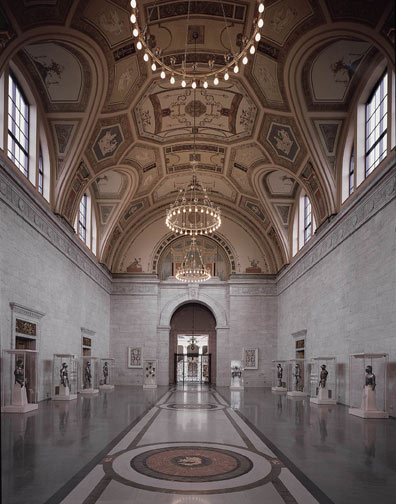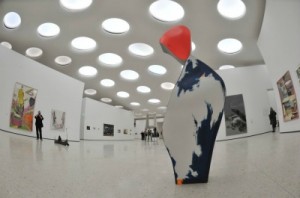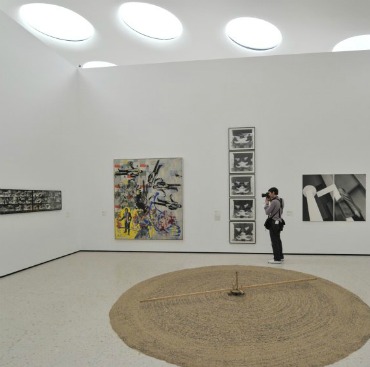On the eve of a big week for the art market in New York — the ADAA Art Show opens Wednesday at the Park Avenue Armory, The Armory Show opens on Thursday on Piers 92 and 94, and there are several smaller fairs, too — I thought it was time for a review of the market.
 Conveniently, ArtPrice recently released its 2011 annual report. It contains some very revealing statistics, showing what’s been in the air for some time now — namely, that the art market at the top is strong, despite continuing worldwide economic troubles, and that it’s stronger in China, which has fewer of those woes, than anywhere else. But the interest is in the details, and below, I have excerpted several points the report made. They are verbatim except for the words in brackets, which I have added for clarity:
Conveniently, ArtPrice recently released its 2011 annual report. It contains some very revealing statistics, showing what’s been in the air for some time now — namely, that the art market at the top is strong, despite continuing worldwide economic troubles, and that it’s stronger in China, which has fewer of those woes, than anywhere else. But the interest is in the details, and below, I have excerpted several points the report made. They are verbatim except for the words in brackets, which I have added for clarity:
- Art in fact sold better in 2011 than at any other time in history with $11.57 billion in total global annual revenue [based on 6.3 million auction results from 4,500 auction houses around the world], up $2 billion versus 2010, which already produced the best performance of the decade.
-
The Asian art market has become the most high-end area of the entire globe. For example, 12.1% of works sold in Asia sell for between $100,000 and $1m, versus 2.2% for the rest of the world.
-
1,675 artworks sold above the $1 million threshold (including 59 above the $10 million threshold) representing a 32% increase of 7-figure (or more) auction sales versus 2010 and an increase of 493% versus the start of the decade! China accounts for the highest auction results (with 774 auction results above $1 million recorded in 2011 compared with 426 in the USA and 377 in the UK), mostly generated at auctions in Beijing and Hong Kong.
-
In 2011, the global art auction market generated 21% more than in 2010 and there is not a single segment of the art market that did not progress in terms of turnover. Compared with 2010, Modern art added $1.2B, Post-war art added $372m, Contemporary art added $291m, Old Masters added $124 million and 19th century art posted an increase of $43 million.
-
The Beijing based China Guardian can boast the highest bid of 2011 after selling Qi Baishi’s Eagle Standing on Pine Tree, Four-Character Couplet in Seal Script for Â¥370 million ($57.2 million) against an initial estimate of Â¥88 million on 22 May 2011. This is the world record for a work of Modern Chinese art.Â
-
Beijing is where the market’s pulse beats strongest now, generating over $3.17 billion in annual revenue, representing more than 27% of global art auction revenue. Behind Beijing there is New York ($2.593 billion), $380 million ahead of London with $2.214 billion and then Hong Kong, which has climbed to fourth place with $796m, representing nearly 7% of global art auction revenue.
-
[While Modern art is the largest category by far], The Old Masters market has doubled in value in two years. The peaks reached in the Old Masters segment (whose market is very contracted for Western signatures) were largely, here too, generated by the rebalancing of the Chinese art market towards other segments. China is in fact the champion for sales of Old Masters (its market is by far the densest) with a total for the segment of more than $704 million in 2011 vs. $248 million in the UK, $128 million in the USA and $46 million in France. After the Modern Qi Baishi, the artist with the best annual auction result was indeed the Old Master Wang Meng. His ink on paper Zhi Chuan moving to Mountain fetched ¥350 million ($54 million) on 4 June 2011 at Poly International.
-
The number of contemporary works of art sold has more than tripled over the decade. In 2011, more than 41,000 Contemporary works sold worldwide, a record number which generated a revenue total of over $1.26 billion compared with $87.7 million in 2001. Contemporary art certainly has the wind in its sails, but it has not become unaffordable since 62% of Contemporary works sold for less than $5,000 in 2011.
- The global unsold rate has been above 35% since 2008. In 2011, it dipped below this threshold to 34.8% despite a 7% increase in the number of lots offered at auctions.
- The most expensive “1%†of all lots sold generated 58.5% of the world’s total auction revenue in 2011. Hence, the remaining 99% of auction results generated less than half of the entire market’s revenue. Again, it is not surprising that China accounts for the largest share of this “1%†(50%) with the USA representing 23% and the UK 20%.
Photo Credit: Christoph Morlinghaus (the 2006 Armory Show)/Courtesy of New York Magazine

